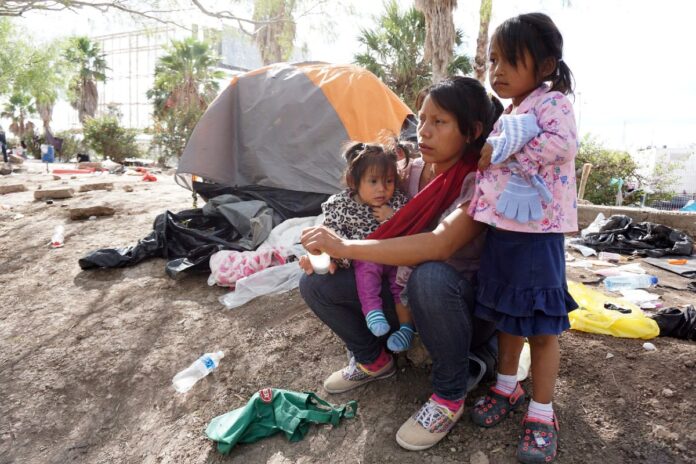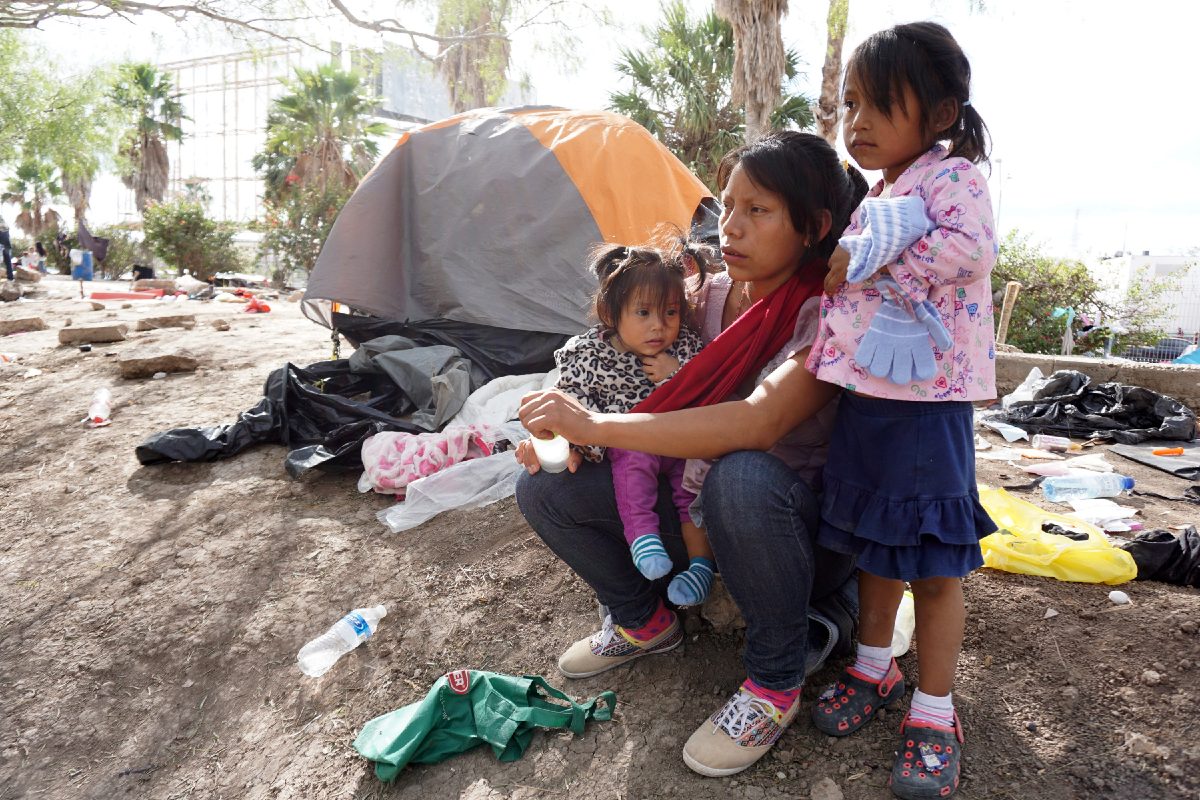In Matamoros, a dirt path along the Rio Grande once lined with tents occupied by asylum seekers was scattered with dirty clothing, toiletries, food, and broken tent poles following a visit from Mexican immigration officials on Tuesday morning.
Just past noon, families living in tents nearby quietly searched through the debris. Residents rescued uneaten food, shoes, buckets, blankets, and other supplies left behind by the estimated 60 Mexican residents of the camp who were granted permission to cross the Gateway International Bridge overnight.
Guidelines published by U.S. Customs and Border Protection note that Mexican nationals are exempt from MPP, and it remains unclear as to why so many Mexican nationals have been trapped in the camps.
Multiple camp residents told The Brownsville Herald that officials with Mexico’s National Institute of Migration (Instituto Nacional de Migración) INM swept through the camp with machetes around 6 a.m., destroying unoccupied tents and throwing belongings into piles.
José, a citizen volunteer who regularly brings supplies in a truck from McAllen with authorization from Mexico’s National System for Integral Family Development (DIF), said that residents woke up to empty tents.
“They started going through the supplies. There was no problem with that,” he said.
“The problem was that Mexican immigration officials arrived, from the building down there,” he says, pointing to Repatriación Humana, the agency in Matamoros tasked with assisting recently deported Mexican citizens.
“They arrived with machetes to destroy the tents so that nobody could use them. That was uncalled for.”
Remaining residents cooked lunch on campfires, charged phones on an outlet connected to a light post near the checkpoint, and talked with loved ones inside sweltering tents underneath the heat of the afternoon sun.
José said that he had just spoken with Enrique Maciel, Regional Delegate for the Tamaulipas Institute for Migrants. Maciel’s office is said to have met with CBP officials on Monday night to discuss allowing a certain number of Mexican nationals to cross the bridge.
“They did it by numbers — 1 to 100, for example. There are more people waiting right now,” he said.
Maciel was not immediately available for comment and officials at Repatriación said that he wasn’t in the office, although he was present in the camp for at least an hour in the afternoon.
Other camp residents confirmed that U.S. immigration officials called out families —- not by name, but by assigned numbers given to those who add their names to the list of asylum seekers kept by officials at the border — granting them the ability to cross the bridge and begin processing.
A mistrust of Mexican authorities remains pervasive among residents of the camp, some of whom have dealt with custody threats from DIF in Matamoros.
One man who rummaged with family members through the belongings said that he didn’t believe those whose numbers were called will actually be allowed to enter the country.
“It’s all lies,” he said.
Raquel, another member of the group of citizen volunteers from McAllen, said she’s worried that the decision to allow the residents to pass was a political “smoke screen.”
“We’re afraid they’re going to let them in, process them for a few months, and then take them to Laredo, or wherever, send them back,” she said.
A young woman from Honduras showed The Herald a video in which immigration officials can be seen pulling apart the unoccupied tents.
“I don’t know why they got rid of them,” said the woman, who wished to remain anonymous.
She said that she has been to three separate court dates in the tent court system in Brownsville. She’ll be stuck in the camp at least until May 6, the earliest possible date for her next asylum hearing.
Asked to comment on the development, a CBP official wrote that “What has been seen in Brownsville recently are ebbs and flows in migration patterns; the Humanitarian Asylum Review Process has not been implemented in that location. CBP continually experiences varying trends with migration patterns due to many factors, but in each case CBP officers consider the sum total of all facts and circumstances and everyone is processed in accordance with the law.
As a rule, CBP is precluded from discussing individual cases for privacy reasons, but all claims are handled on a case-by-case basis and there are different levels of granularity, facts and circumstances that are unique to each case. Those migrants not otherwise amenable to MPP are turned over to ICE-ERO or HHS-ORR depending on the specifics of their respective cases.”






